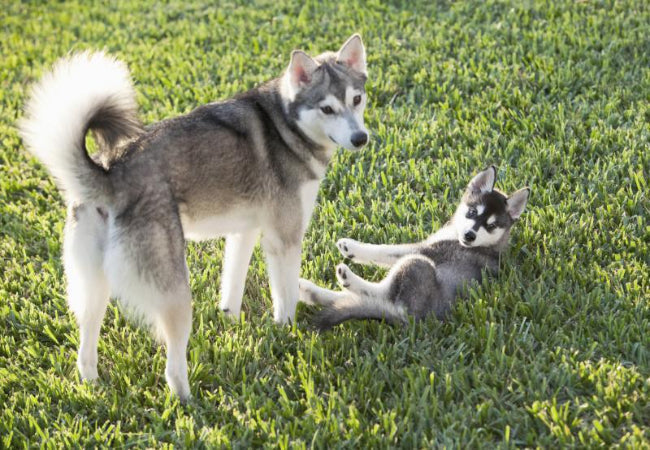Alaskan Klee Kai Guide: Health, Training & Tips for Mini Huskies 🐶✨

In this article
Alaskan Klee Kai Guide: Health, Training & Tips for Mini Huskies 🐶✨
By Dr. Duncan Houston BVSc
The Alaskan Klee Kai may look like a mini Siberian Husky, but it’s a distinct breed—energetic, intelligent, and fiercely loyal. Developed in Alaska in the 1970s, this small spitz has a big personality. In this guide, I’ll share what every vet wants you to know—from health screening to training, grooming, and savvy tools that support your AKK’s wellbeing.
📜 History & Physical Attributes
Linda Spurlin created the Alaskan Klee Kai in Wasilla, Alaska in the 1970s to produce a companion-sized dog resembling her beloved Huskies without the working size.
- Toy: up to ~13″ / ≤ 9 lb
- Miniature: 13–15″ / 10–15 lb
- Standard: 15–17″ / 15–20 lb
Coat colors include black-and-white, gray-and-white, red-and-white, and, less commonly, all-white.
🧬 Temperament & Personality
AKKs are bright, curious, and alert—natural watchdogs. But they can be shy with strangers and have strong bonds with their family.
🏡 Activity Requirements & Living Conditions
This isn’t a backyard breed. Alaskan Klee Kais need at least 30–60 minutes of daily exercise—walks, play, or scent-based activities—to prevent restlessness or anxiety-induced barking.
✂️ Grooming & Coat Care
With a thick double coat, AKKs shed consistently and blow out their undercoat seasonally.
- Brush 2–3× weekly, daily during 'blowing' seasons
- Bath only as needed—these dogs are naturally clean
- Clean ears, trim nails, brush teeth regularly
Use the Ask A Vet app to set reminders and track coat quality—which helps catch issues like allergies or mats early.
🍽️ Nutrition & Feeding Strategy
AKKs stay lean and muscular with a quality diet of ½–1 cup high-quality kibble daily, depending on size/activity. Avoid bloat by feeding twice a day and using calm feeding routines.
🩺 Health & Veterinary Guidance
Life expectancy is 12–16 years.
- Patellar luxation—knee instability common in small breeds
- Eye conditions—juvenile cataracts, progressive retinal atrophy
- Factor VII deficiency—a rare bleeding disorder
- Thyroid or liver issues in some lines
Annual exams with bloodwork, eye checks, and joint evaluations are recommended. Track health screening reminders using Ask A Vet.
🎓 Training & Socialization
Train using patience, consistency, and positive reinforcement:
- Start socialization at 8 weeks—exposure to people, pets, environments
- Short, engaging sessions with treat and interactive toy rewards
- Teach recall early, as prey drive can override commands
- Use mental enrichment toys, scent games, obedience tasks
Log progress in the Ask A Vet behavior journal, so your vet can see developmental trends and guide interventions.
📱 Ask A Vet
Supporting your AKK with top-tier tools:
- Ask A Vet: Track weight, behavior, health metrics, reminders, and vet chat access
👪 Is an AKK Right for You?
- ✅ Ideal: Active singles or families with older kids, experience with spitz or working breeds
- ❌ Avoid if: You’re inexperienced, have small pets, or can’t commit to daily activity and training
🧑⚕️ Final Thoughts from Dr Duncan Houston
The Alaskan Klee Kai combines intelligence, loyalty, and charm in a compact package. But underestimating its energy, grooming, and mental health needs leads to stress or behavior issues. With consistent care, training, and proactive monitoring using Ask A Vet, these mini‑Huskies can thrive alongside you for years.
Thinking of adding an AKK to your home? Start by tracking weight, grooming, exercise, and behavior in Ask A Vet from day one—then harness their heart with curiosity and connection.






